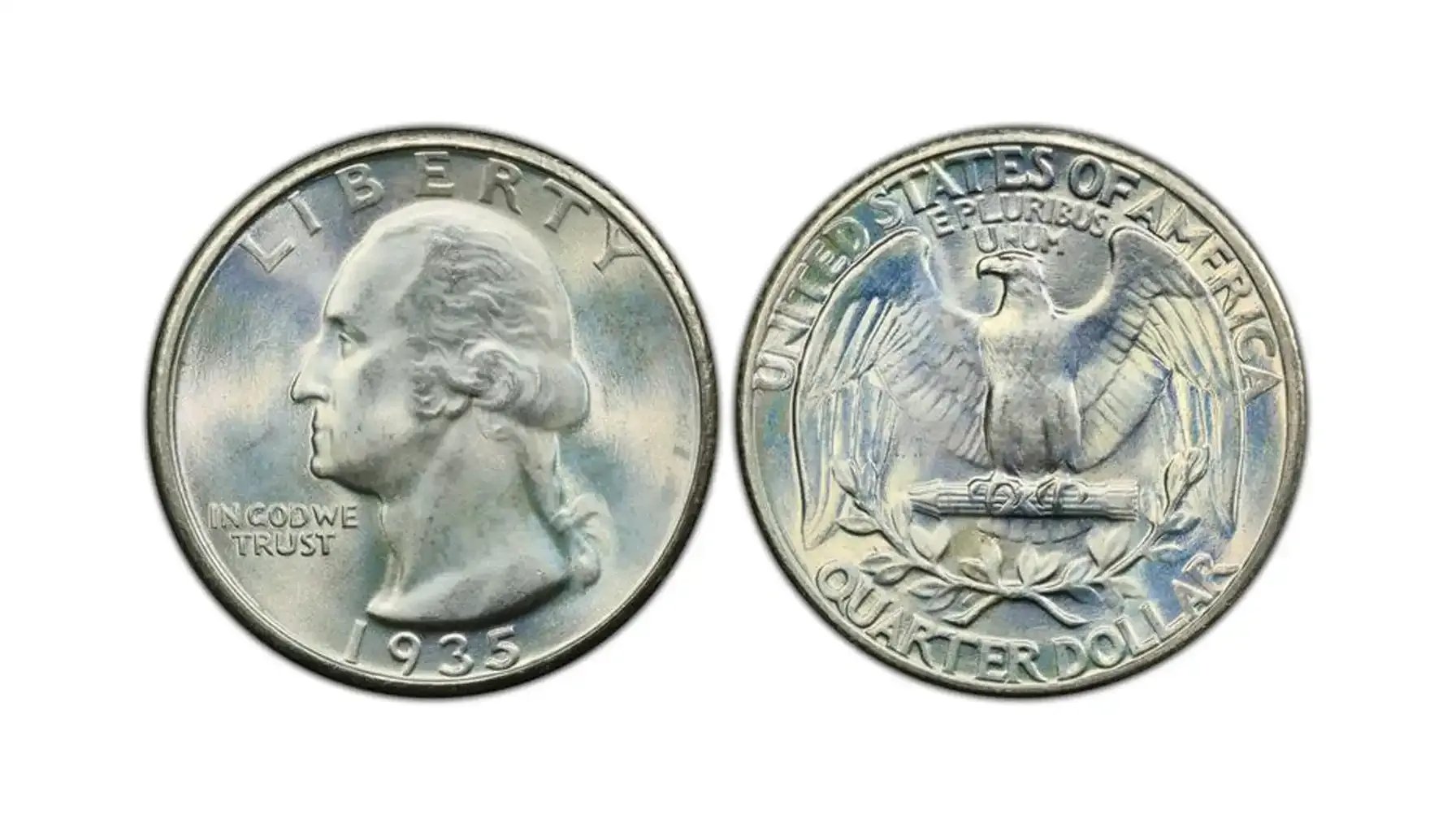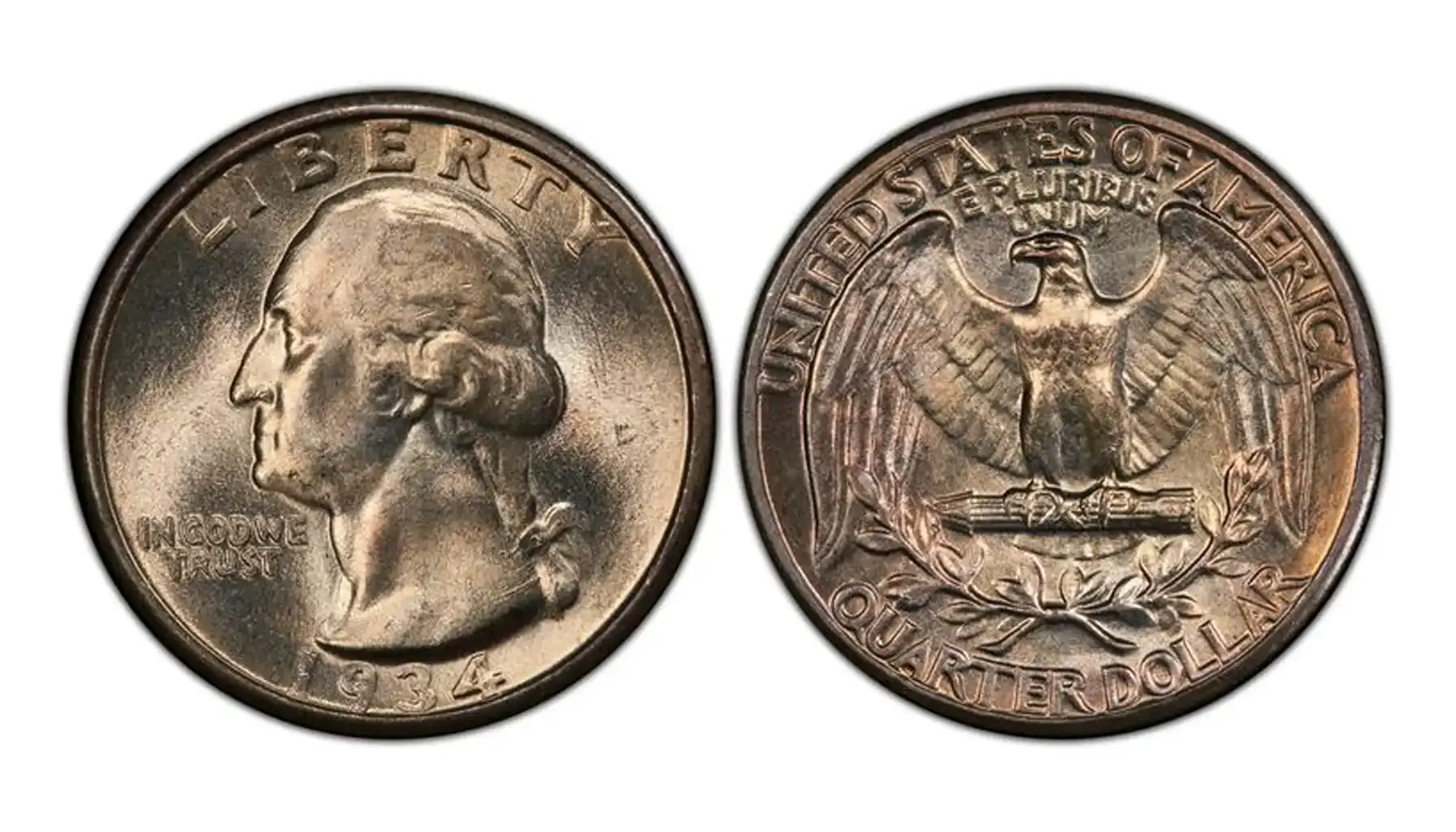Contents:
To understand a coin's worth, focus on three key factors:
Rarity: This reflects how many coins were originally produced (mintage) and how many have survived over time. Fewer surviving examples generally mean higher value.
Grade: This is crucial. A coin's state of preservation, from heavily worn to pristine, significantly impacts its value.
Demand: Even rare, high-grade coins need collector interest. Popular series or those with interesting historical narratives tend to have higher demand and, consequently, higher market prices.
Stepping back into the heart of the 1930s, we find ourselves examining the humble penny 1935 value, a coin that, despite its everyday purpose, holds fascinating stories and varying degrees of value for collectors.
You can discover all the coin details by yourself using a coin identifier app for free.
1935 Wheat Penny Philadelphia No Mint

Name | 1935 Wheat Penny (No Mint Mark) |
Special Features | Features the classic Lincoln profile on the obverse and two wheat stalks on the reverse. The absence of a mint mark signifies it was produced at the Philadelphia Mint. |
Mintage | 248,720,000 |
Price | $0.20 - $50~ (depending on condition) |
Listed prices are approximate and may vary depending on the coin's condition, market demand, and other factors
Market Value
Grade | Price (USD) |
Good (G-4) | $0.20 - $0.50 |
Fine (F-12) | $0.50 - $1.00 |
VF (VF-20) | $1 - $2 |
AU (AU-58) | $3 - $5 |
MS (MS-63 RB) | $8 - $15 |
MS (MS-65 RD) | $20 - $50~ |
Historical Context
The 1935 no mint mark penny from the Philadelphia Mint was struck during a pivotal phase of the Great Depression. By 1935, the United States was two years into Franklin D. Roosevelt's New Deal programs, which aimed to bring relief, recovery, and reform. While the nation was still deeply mired in economic hardship, 1935 saw signs of tentative improvement.
The significant mintage means that the 1935 Wheat Penny no mint mark value is generally lower than its branch mint counterparts in circulated grades, but the 1935 penny no mint mark value can still be substantial for high-grade examples. You might find its specific 1935 no mint Wheat Penny value in grading guides.
1935-D Wheat Penny
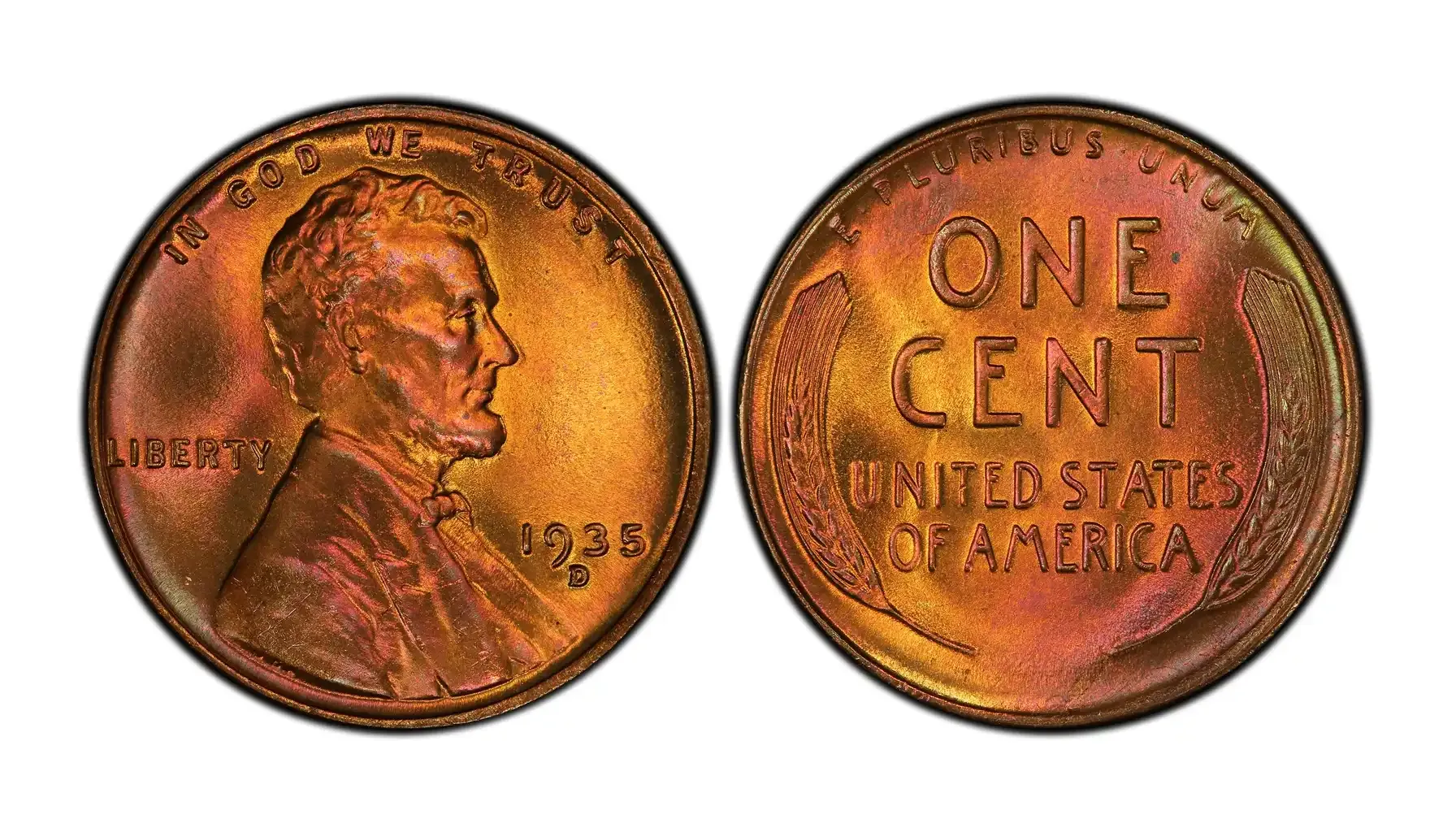
Name | 1935-D Wheat Penny |
Special Features | Struck at the Denver Mint, identified by the "D" mint mark below the date. Maintains the standard Lincoln obverse and wheat ears reverse design. |
Mintage | 27,702,000 |
Price | $1 - $100~ (depending on condition) |
Listed prices are approximate and may vary depending on the coin's condition, market demand, and other factors
Market Value
Grade | Price (USD) |
Good (G-4) | $1 - $2 |
Fine (F-12) | $2 - $4 |
VF (VF-20) | $5 - $10 |
AU (AU-58) | $15 - $30 |
MS (MS-63 RB) | $30 - $60 |
MS (MS-65 RD) | $50 - $100~ |
Historical Context
The 1935 Wheat Penny D, produced by the Denver Mint, had a considerably lower mintage compared to Philadelphia. While New Deal programs were active across the country, the impact and recovery pace varied.
The lower mintage makes higher-grade examples of the 1935 D penny value significantly more desirable to collectors. The agricultural and rural core region needed these coins because it was rebuilding after the environmental disaster of the Dust Bowl and facing ongoing economic challenges, despite the beginning of federal support programs. The 1935 D Wheat Penny value generally surpasses that of the Philadelphia issue due to its relative scarcity.
1935-S Wheat Penny
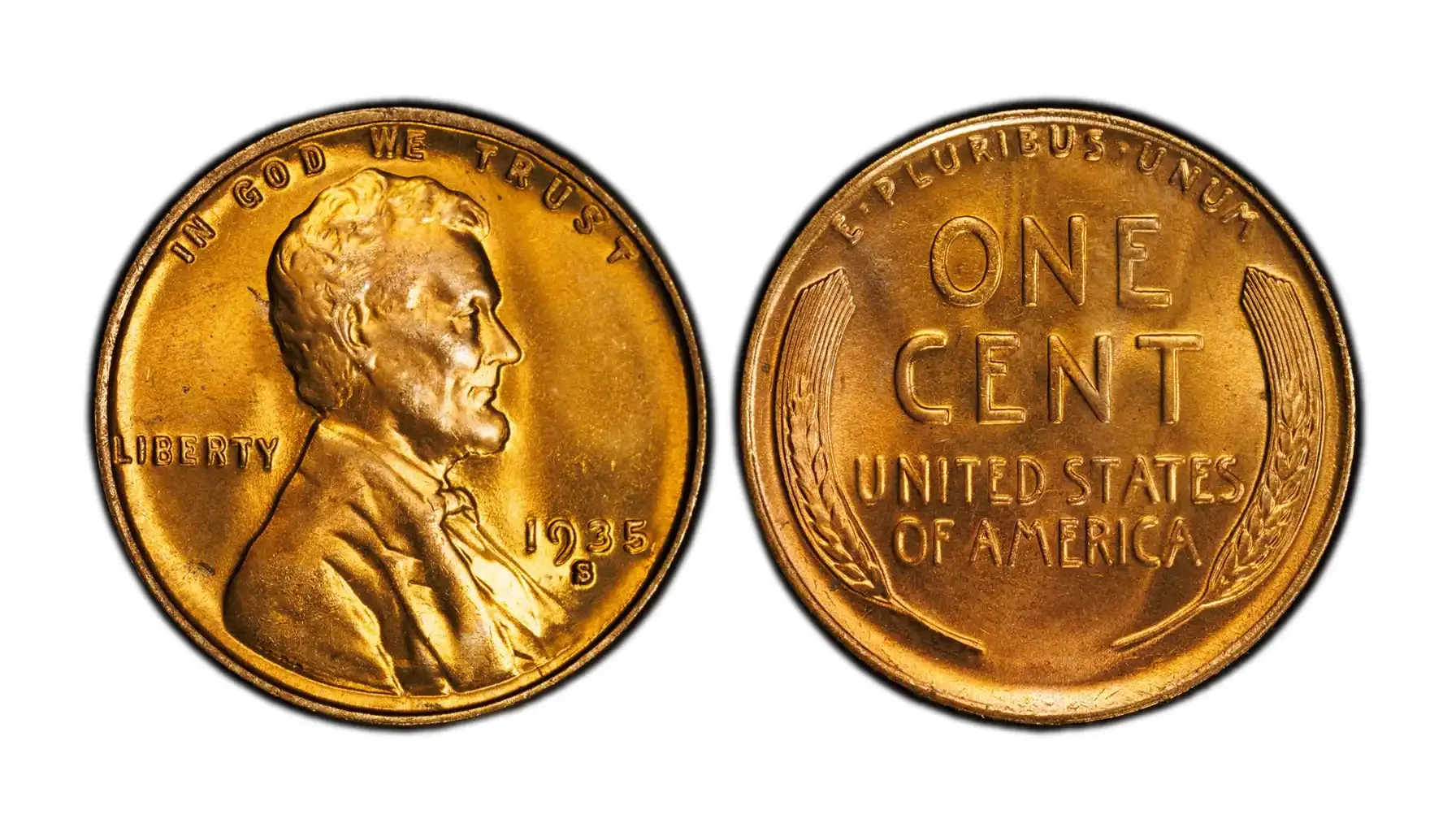
Name | 1935-S Wheat Penny |
Special Features | Produced at the San Francisco Mint, denoted by an "S" mint mark below the date. Features the familiar Lincoln portrait and wheat reverse. |
Mintage | 40,810,000 |
Price | $0.50 - $80~ (depending on condition) |
Listed prices are approximate and may vary depending on the coin's condition, market demand, and other factors
Market Value
Grade | Price (USD) |
Good (G-4) | $0.50 - $1.00 |
Fine (F-12) | $1 - $2 |
VF (VF-20) | $3 - $6 |
AU (AU-58) | $10 - $20 |
MS (MS-63 RB) | $20 - $40 |
MS (MS-65 RD) | $40 - $80~ |
Historical Context
The 1935 S Wheat Penny value makes it another key coin for collectors, as its mintage from the San Francisco Mint was higher than Denver but still much lower than Philadelphia. The San Francisco Mint served the West Coast, a region that also felt the profound effects of the Great Depression, albeit with some unique characteristics due to its agricultural and port-based industries.
The influx of "Okies" and "Arkies" migrating westward in search of work, as famously depicted in "The Grapes of Wrath," presented unique economic and social challenges for California. The lower mintage figures for this branch mint, compared to Philadelphia, contribute to the increased desirability of uncirculated examples today, especially impacting the 1935 S penny value.
1935 Wheat Penny DDO
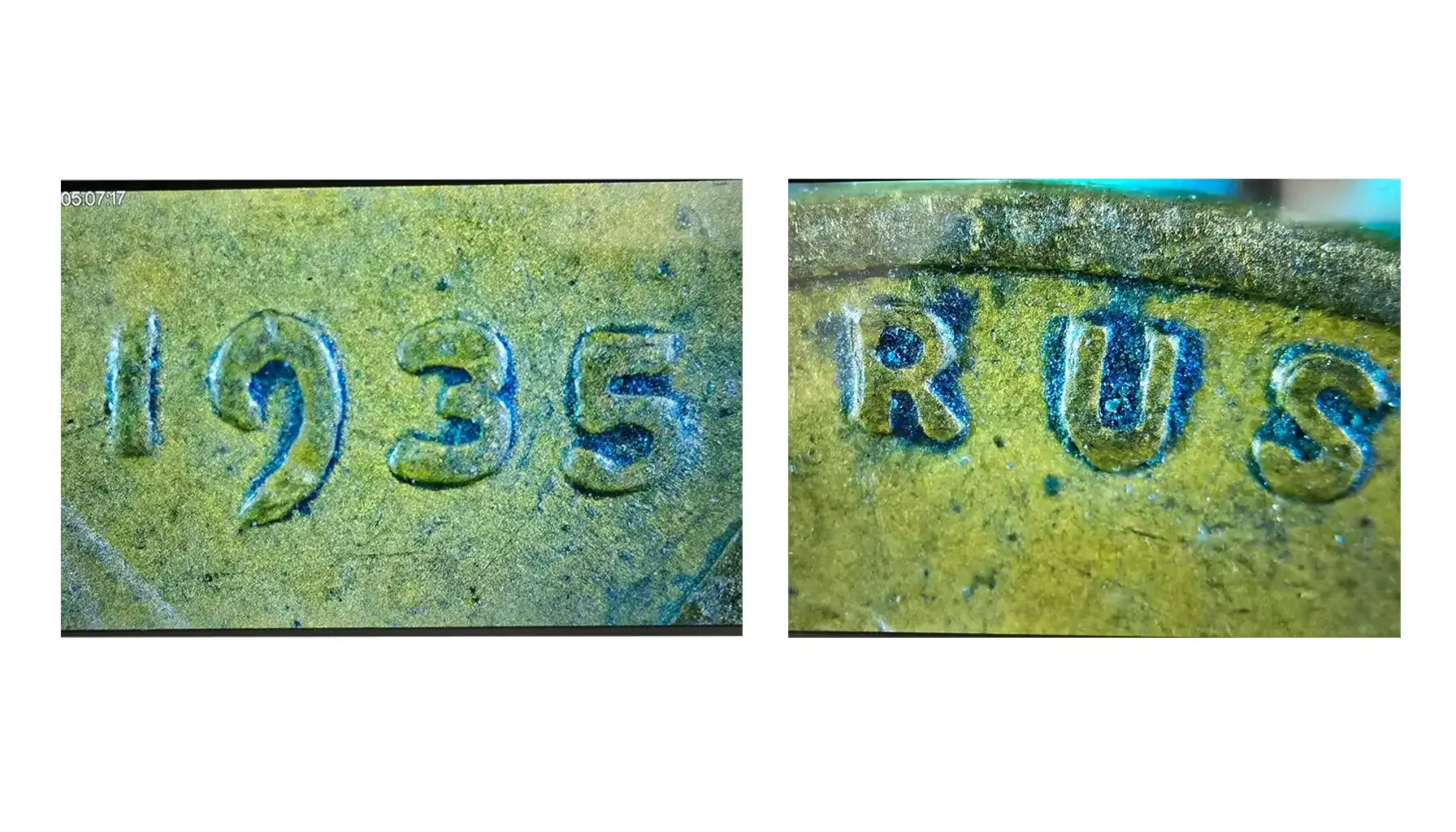
Name | 1935 Wheat Penny - Doubled Die Obverse |
Special Features | Exhibiting clear doubling of design elements on the obverse (front) of the coin, notably visible on the date, "LIBERTY," and "IN GOD WE TRUST." This results from multiple, slightly misaligned impressions from the master hub onto the working die. |
Mintage | Extremely Low (Accidental finds, unique to specific dies; no official mintage) |
Price | $100 - $1,000s~ (Value depends heavily on the strength of doubling and coin grade) |
Listed prices are approximate and may vary depending on the coin's condition, market demand, and other factors
Market Value
Grade (Severity) | Price (USD) |
Circulated (Minor DDO) | $100 - $300 |
Circulated (Strong DDO) | $300 - $800 |
Uncirculated (Minor DDO) | $500 - $1,500 |
Uncirculated (Strong DDO) | $1,500 - $5,000~ |
Historical Context
During the 1930s, minting technology was less precise than today, relying more on manual labor and less automated machinery. This increased the potential for anomalies like doubled dies to occur.
For the 1935 penny error specifically, any discernible DDO would have been created amidst the high-volume production aimed at meeting the nation's currency needs during the Depression, making such a find a truly rare and valuable anomaly from that period.
1935 Wheat Penny - Off-Center Strike
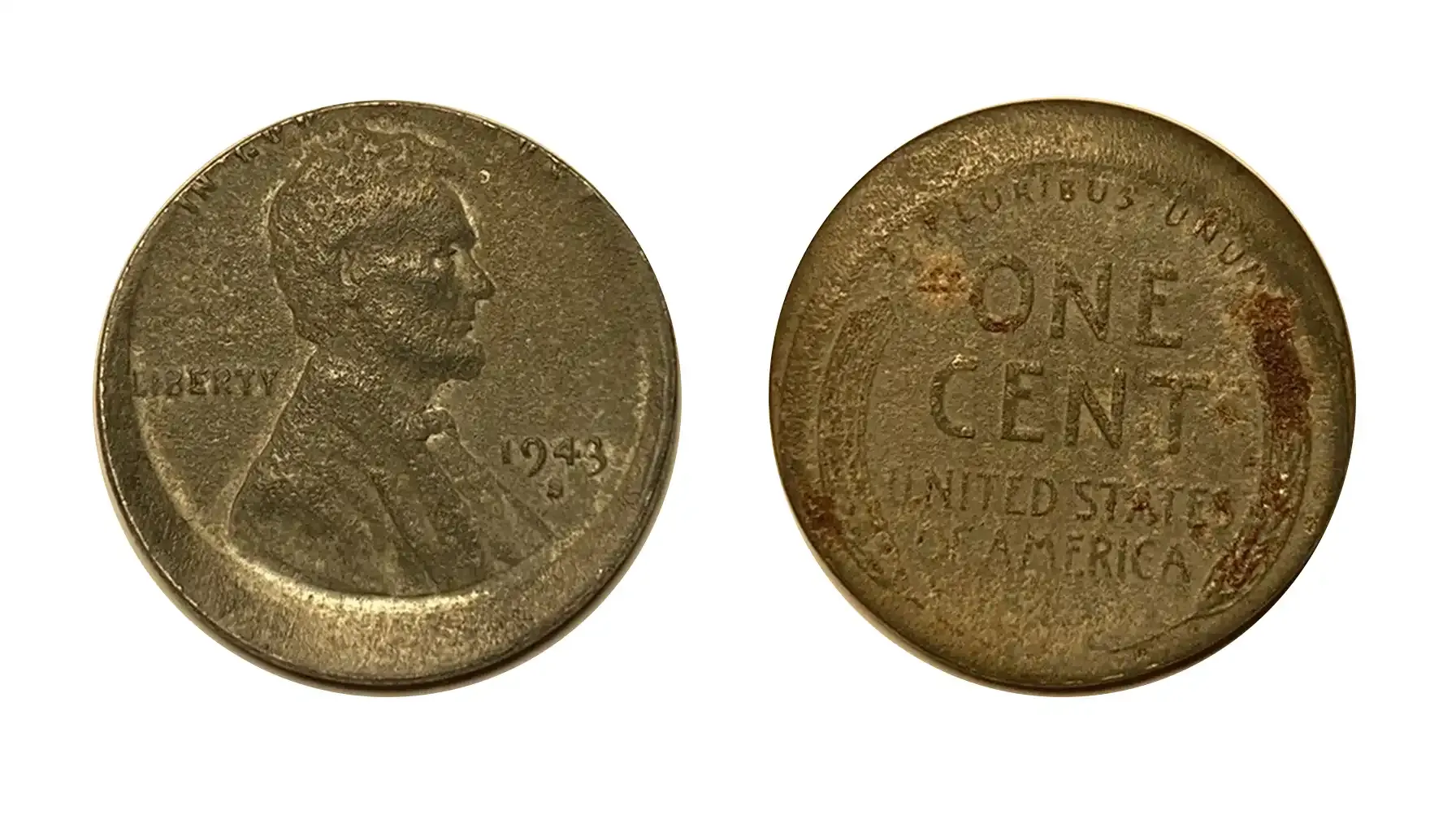
Name | 1935 Wheat Penny - Off-Center Strike |
Special Features | The coin's design is not centered on the planchet (coin blank), leaving a portion of the blank space visible on one side and cutting off part of the design on the opposite side. The degree to which it is off-center varies significantly. |
Mintage | Extremely Low (Occasional anomalies across all mints; no official record) |
Price | $20 - $500~ (Highly dependent on percentage off-center and whether the date is visible) |
Listed prices are approximate and may vary depending on the coin's condition, market demand, and other factors
Market Value
Degree Off-Center & Grade | Price (USD) |
Minor (1-5% off) | $20 - $75 |
Moderate (5-20% off) | $75 - $250 |
Significant (20-50% off) | $250 - $500~ |
Extreme (>50% off, date legible) | $500~ (if key features are visible) |
Historical Context
Off-center strike errors were more common in earlier minting operations, including the 1930s, due to less sophisticated feeding mechanisms in the coining presses. These errors occur when a coin blank is not correctly positioned within the collar before the dies strike it.
For a 1935 Lincoln Penny, an off-center strike provides a direct glimpse into the mechanical challenges faced by the mints striving to produce millions of coins daily under considerable pressure. The value of such an error is primarily determined by the degree of the off-center strike and whether key identifying features like the date and mint mark remain legible, making them unique relics of the coin production process during the Depression era.
1935 Wheat Penny - Die Break Error
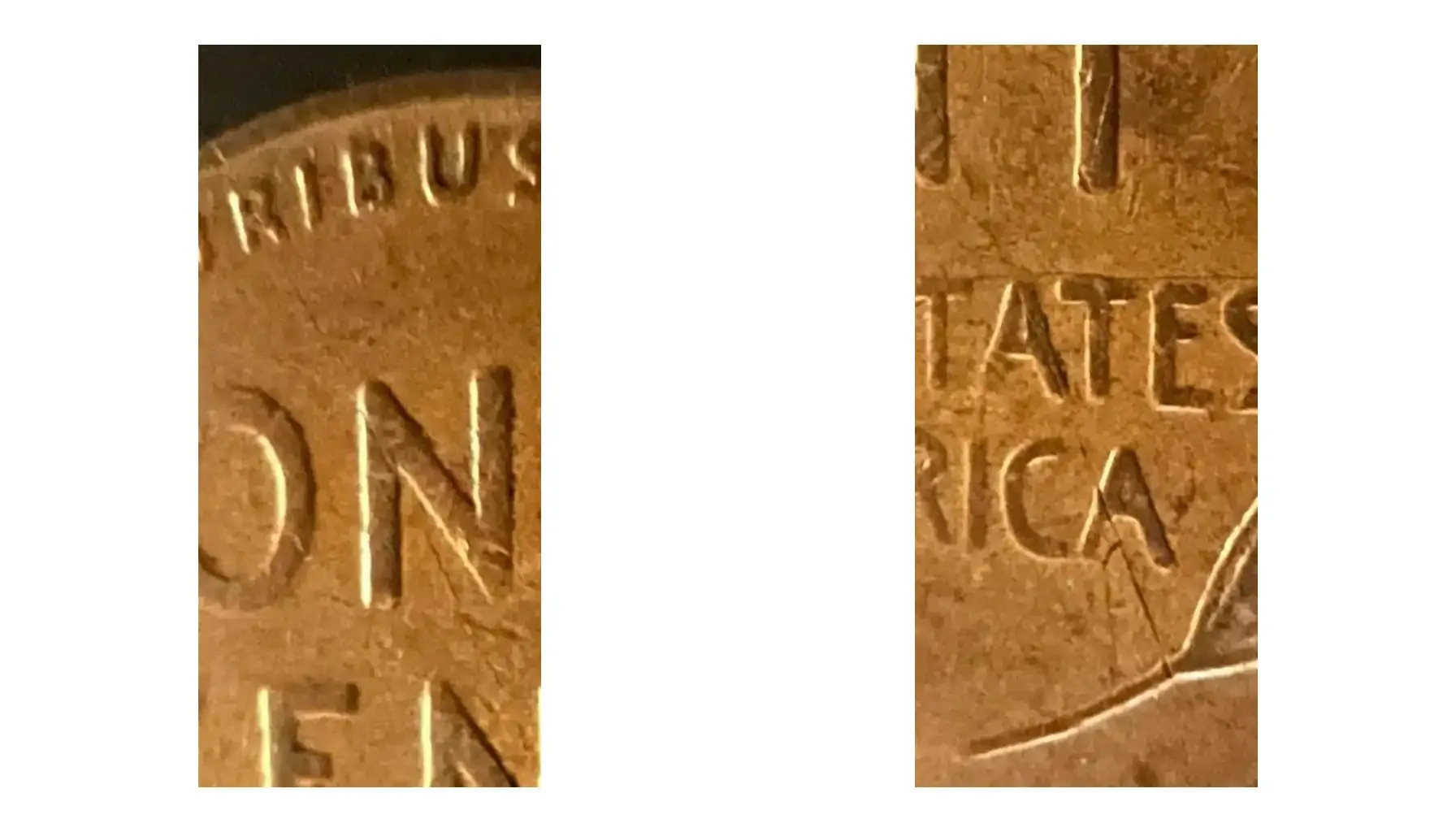
Name | 1935 Wheat Penny - Die Crack Error |
Special Features | Manifests as raised lines or lumps on the coin's surface, mirroring a crack or a piece of the die that has broken off. These can range from faint lines (die cracks) to large, raised areas (cuds) where a significant portion of the die's edge or field has fractured and separated. |
Mintage | Extremely Low (Accidental and sporadic; mintage figures are unknown, as they represent production anomalies) |
Price | $10 - $500~ (Value is highly dependent on the visibility, size, location, and overall visual impact of the die break) |
Listed prices are approximate and may vary depending on the coin's condition, market demand, and other factors
Market Value
Type of Break & Grade | Price (USD) |
Minor Die Crack (Circulated) | $10 - $30 |
Significant Die Crack (Circulated) | $30 - $100 |
Minor Die Break (Uncirculated) | $50 - $200 |
Major Die Break (Cud - Uncirculated) | $200 - $500~ |
Extensive Die Break / Complex Cud | $500 - $1,500~ |
Historical Context
In the 1930s, with continuous high-volume production during the challenging economic climate, dies were subjected to immense stress, often leading to fatigue and fracturing. When a die cracks, molten metal (or rather, the coin's planchet) flows into the crack, leaving a raised line on the coin. If a piece of the die actually breaks off, the corresponding area on the struck coin will appear as a raised, unengraved blob known as a "cud."
These imperfections are cherished by collectors as tangible evidence of the die's lifespan and the strenuous conditions of minting. For a Wheat Penny 1935, a prominent die break or cud serves as a unique historical artifact, connecting the coin directly to the wear and tear of Depression-era production. Many factors contribute to the value of 1935 penny or the overall value of 1935 Wheat Penny, making research crucial. It truly shows that is a 1935 penny rare depends on its specific characteristics.
Ultimately, the humble 1935 cent, whether it bears a mint mark or carries a unique flaw from its creation, is more than just a piece of copper. Each tells a silent tale of a nation navigating its way through the Great Depression.


